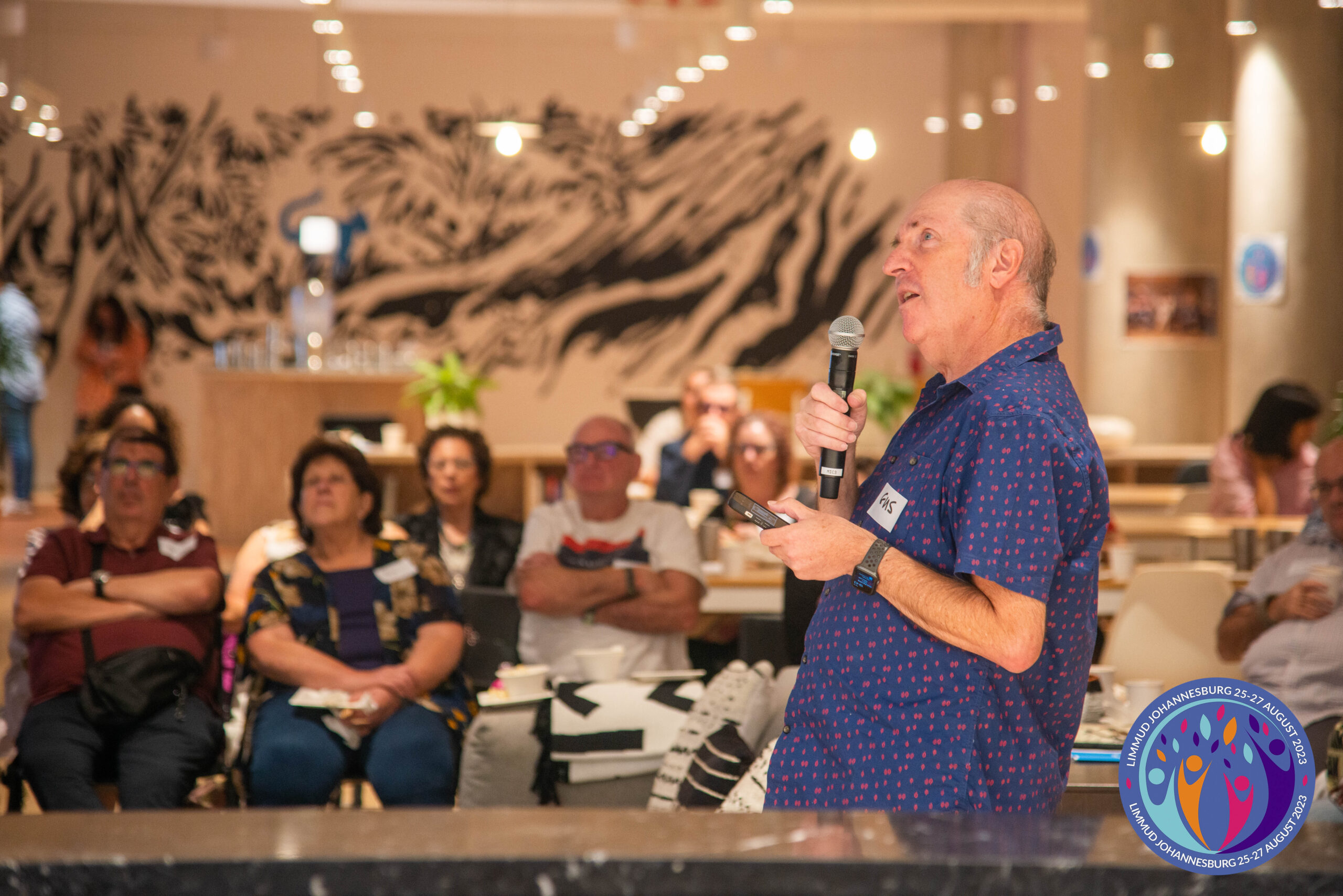click to dowload our latest edition
CLICK HERE TO SUBSCRIBE TO OUR NEWSLETTER


Published
1 year agoon
By
Steven Gruzd“The best thing about Roodepoort in the West Rand where I grew up was the train station to Johannesburg,” joked journalist Gus Silber. His father was a librarian who catalogued their books at home according to the Dewey Decimal System. As a young boy, Silber found reading was a way to escape the small-town blues. When he picked up a book called The Family of Man, he was entranced by its black-and-white photographs from 37 countries on six continents. His lifelong fascination with photography began.
Silber gave a talk titled “People who shoot people: on the frontline of history with South African Jewish photographers” at WeWork in Rosebank on 16 March. He was speaking at Taste of Limmud.
“Photographs take us into other people’s lives and worlds from far away,” Silber said. “Good photographers capture the soul. Their images linger for years.”
Silber offered some thoughts on why there are so many famous Jewish photographers, in South Africa and around the world. “Part of it is they feel they have a duty to bear witness, to see that future generations aren’t allowed to forget,” Silber said. There was also a tradition of photography in Europe, from where many Jews emigrated, for example in taking family portraits. Photography was a way to make a living in their new countries. Several had social and political leanings (usually on the left).
One of South Africa’s most famous humanist photographers was David Goldblatt. “His father, Eli, was a tailor. He had a way of summing up his customers before they spoke, and David inherited that eye for sizing up people,” Silber said. Goldblatt was a Boerejood, a Jew who grew up speaking Afrikaans. His subject was people, especially Afrikaners and black South Africans from his hometown of Randfontein. His evocative photographs capture the essence of his subjects, and he documented what life was like.
Goldblatt influenced and mentored many photographers in the generation that came after him. One was Paul Weinberg, who took graphic pictures during the State of Emergency in South Africa in the 1980s. Silber remarked how Weinberg saw his work as a way to fight ignorance and “national amnesia” about apartheid and its depravities.
Another photographer Silber discussed was Anne Fischer. She was a German-Jewish emigrant in Cape Town, having left Nazi Germany in 1937. She was a documentary photographer who had a studio for wedding photographs but was drawn to the townships to record and reflect life there.
Gideon Mendel is a South African-born photographer now living in London. He took iconic photographs of the HIV/AIDS epidemic in South Africa. He has become famous for his Drowning World series, where he photographs flood victims standing in the water as if for formal portraits, giving his subjects dignity. “They are pictures of resilience, survival, and hope in a world devastated by climate change,” Silber said.
Silber also highlighted the work of Marc Shoul, who grew up in Brakpan on Johannesburg’s East Rand. Through his Landsman series, he takes expressive photos of the Orthodox Jewish community. His website says, “The pictures he is taking are in part a study of acceptance and exclusion. While some carry greater resonance, they do not engage directly with political complexities or current affairs. There is something of the claustrophobia and compassion of the family in the series; of a tension between filial duty and rebellion; of bewilderment and pleasure at its strictures. This is the domain of the personal: of exceptionally ordinary spaces, and clothing, and symbols that have seeped into life. Of sheitels [wigs worn by married women] and kosher stickers and Jerusalem souvenirs. Despite the domestic prosaicness, there is a nod to the incongruousness inherent in practicing what are in essence ancient rituals, right here in contemporary South Africa.”
Although cellphones have democratised photography, and millions of pictures are taken every day, it’s quite rare that one of these makes us say, “Wow!” Silber said that while all of us carry a powerful camera in our smartphones, it’s the photographer’s eye that separates the professional from the amateur. It’s the way she observes and reflects society, her empathy with her subjects that allows her to take the perfect shot. And many of the very best have been and are Jewish.
